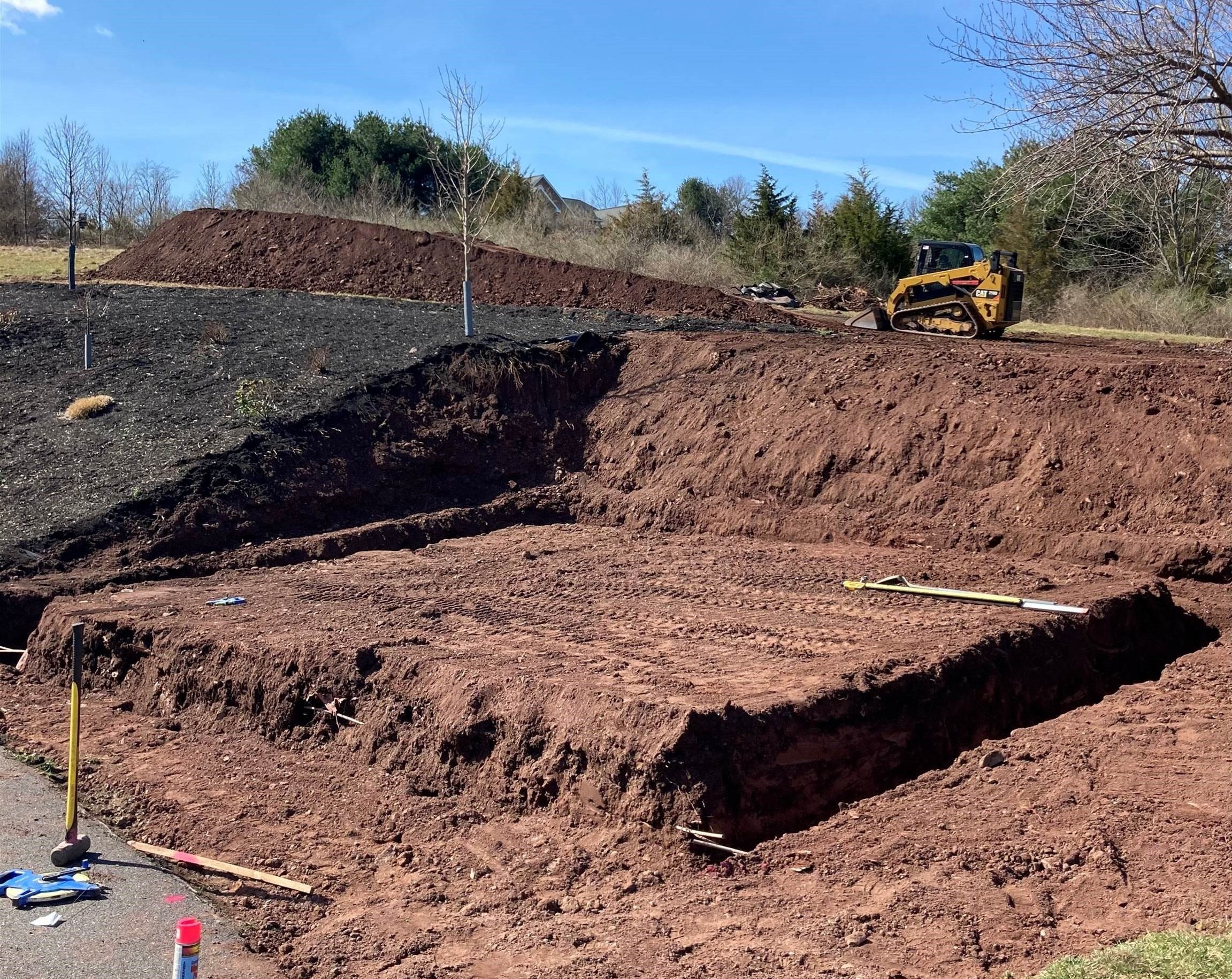Laying the Groundwork: Proper Site Preparation
You may not realize it, but there is a lot of preparation that goes into any construction project before the building process even begins, and it all starts with the Site Work.
Site work is an extremely important step as it lays the groundwork for everything that is to come. It is integral to ensuring your buildings foundation is safe, stable, and properly constructed.
Hiring the Right Excavator
The very first step in site work is hiring a professional excavator. Because this is an intensive process, it typically requires experienced construction workers, serious equipment, and excavation expertise. While you might feel that it is an easy way to save money by handling excavation yourself or hiring an excavator directly, often times it’s not that simple. It takes years of construction knowledge and planning to properly describe the scope and site work expectations for each individual building project. At Conestoga, we recommend that our customers strongly consider having us contract the Excavator and manage their work to ensure a properly prepared site. Simply put, the lowest price provided for your site work is often not the best value for your needs.
Mobilization and Erosion and Sedimentation (E&S) Controls
It’s not unusual in today’s world that your site may require a civil plan prepared by a professional engineer to meet your local municipalities requirements. In some instances, a civil plan will not be required, but you will still have to follow certain practices to ensure a safe and clean jobsite. This often includes providing a stabilized main site access and controls put in place for erosion and sedimentation.
Clearing and Grubbing
Once you have the initial access and E&S in place, site work will start with clearing and grubbing. Any trees and vegetation will be removed from the site, and a special rake and blade will pull up buried roots and limbs. This is done so grass and other materials do not decompose under your new building. If these materials are left within the building pad, it is very likely that your site, and subsequently, your building could experience settling and damage.
Subgrade Stabilization
Next up; removing all the topsoil. This is done to reach stabilized soils that prevent the ground from shifting or caving in during construction and in the future. If subgrade stabilization is not performed correctly, your building’s foundation could become vulnerable to cracking and lead to serious structural damage.
Bulk Excavation / Grading
This is the removal of all excess soil, rocks, and other materials from the construction site so your building can be level, sturdy, and safe. Excavation requires large earthmoving equipment and work crews who are experienced and knowledgeable with the process. The excavators will use electronic tools and lasers to verify that they have prepared the site at the right elevation and confirm that it is level.
Stormwater Systems and Utilities
Drainage systems are used to clear stormwater from the area. It can be as simple as gutters and downspouts running onto the ground surface, to having requirements for stormwater basins, rain gardens, or underground pits that slowly dissipate the stormwater back into the ground. In addition to stormwater systems, your project may require utility distribution systems that are used to bring water, electric, gas and sewer to the new building. These types of systems are crucial because just about all commercial, industrial, or residential projects require these features.
Final Grading and Spreading Topsoil
After the building is constructed, one of the last steps of most projects is for the excavated soils to be backfilled around the perimeter of the building. This may also include stoning in driveways or exterior walkways and preparing those areas for paving, concrete, or other hardscaping. The removed topsoil will often be used around the perimeter of the site to finish off the final grade of the property. After this step is completed, things like lawn seeding and landscaping can commence to provide the finished product we all look forward to!
This all may sound overwhelming, and it can be, if you try to take it on yourself. That’s why we tell every customer, unless you own an excavation company, leave the site work to the professionals. We’ve had several instances where landowners try to prep the site on their own; then when we show up to start construction, we realize the site is not level, it’s holding water and it’s not safe to build on. This can push the start of construction back, increase expenses, and cause issues in the future. Conestoga works with many professional excavators and we will gladly incorporate them into your complete build package, which will give you the peace of mind that they will get the job done right!
If you’re looking for a post frame builder that will deliver the honesty, integrity and value you deserve, contact us. We look forward to discussing your project!

